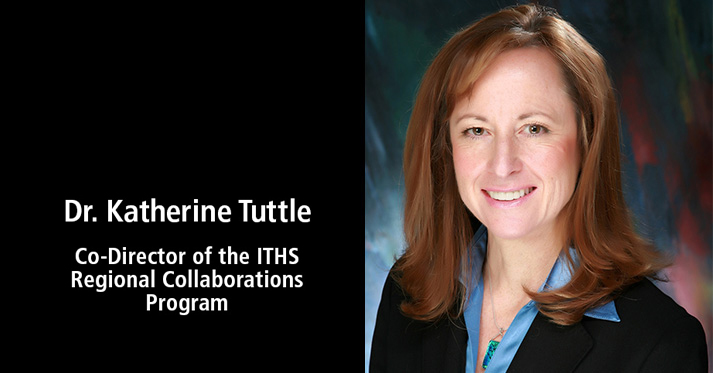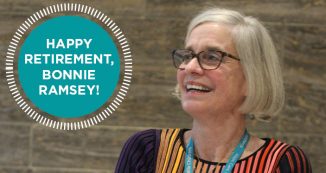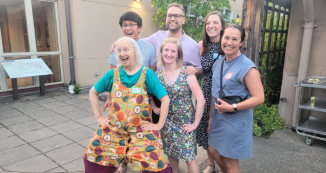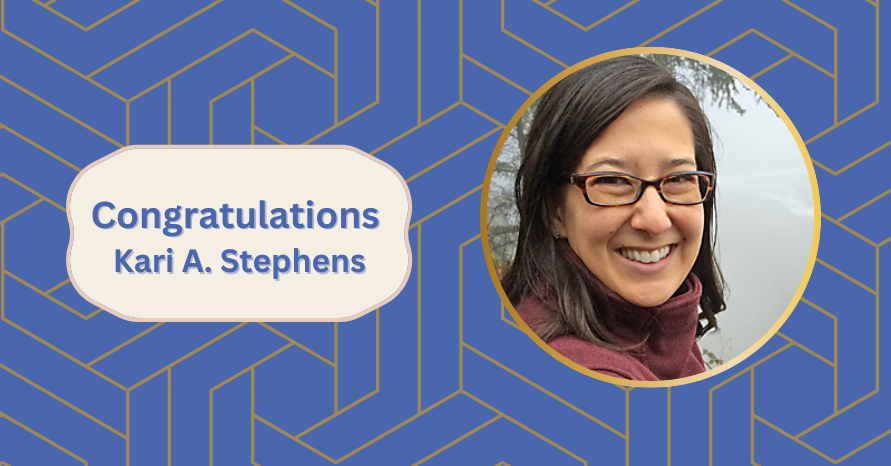
03 Jan Meet Dr. Katherine Tuttle, Co-Director of the ITHS Regional Collaborations Program
Dr. Katherine Tuttle is the Co-Director of the ITHS Regional Collaborations Program, an arm of ITHS Community Engagement efforts. In this role, she serves as Chair of the Regional Advisory Workgroup, responsible for providing leadership and guidance on ITHS efforts to engage regional investigators and institutions in the five-state WWAMI region to promote and conduct translational science. We recently spoke with Dr. Tuttle about her work in the region.
Tell us about your background and role as the ITHS Co-Director for Regional Collaborations.
I am the Executive Director for Research at Providence Health Care, which is the Providence Health System of eastern Washington and Montana. I’ve been a faculty member of the University of Washington for about 25 years, and I am an internist and a nephrologist. My appointment is in the Department of Medicine. I’m a Professor of Medicine in the Division of Nephrology. I have had a great working relationship with that group for many years. We have had many research collaborations together across the state.
ITHS has an opportunity to make major impact by taking science to the people and bringing people to the science.
You’ve been the co-director for about a year and a half. What has been your focus?
A lot of it has been an instructive experience with learning how to navigate ITHS and learn all of its moving pieces. I was an active participant in writing the grant for the CTSA renewal, which was a great immersion experience.
I have also been working alongside Laura Mae Baldwin, MD, MPH, who leads the WWAMI-region Practice and Research Network (WPRN). I have dipped my toes in to provide support and leadership. I have also been involved in the community engagement program. For example, Gonzaga University in Spokane, Wash. has a major expansion going on in medical education. We are now exploring the opportunities to grow that into a key research collaboration. Those things have kept me pretty busy.
What are some of the ways ITHS is engaging investigators in the region?
The main way so far has been our regional networks. There is the WPRN, which allows providers in primary care practices to recruit, enroll, and even participate at an investigator-level in various studies right in their own practices, which is wonderful. The Northwest Participant and Clinical Interactions Network (NW PCI) is complementary to that. It is focused on regional research centers as opposed to clinical practices. These research centers are places where multicenter studies, including major federally funded studies, can be conducted.
My goal is to make ITHS as fully available as possible to the region and for regional expertise and resources to be fully available to ITHS.
The other thing we have been working on is the regional work group, which is a collaboration among regional universities. Some of these may be a part of the NW PCI Network, but there are universities without a clinical research center. And then there are clinical research centers without a university, so they don’t completely overlap. We are trying to work with our regional universities and academic medical centers, especially to promote young investigator training and retain talent in the region.
Why do you think it’s so important to bring together these collaborations across the region?
Because that’s the way new knowledge will have the greatest impact. When many of us write an NIH grant, even if it’s for some type of basic or discovery science, there is usually an introductory sentence about a health problem that we intend to solve. A lot of times that is all you will read about the health problem. Then we go off, deep into the weeds, about complex biology and science. Which is brilliant, but if it’s really to have meaning from the standpoint of health, we need to make the link back to patients and communities.
Certainly there are many steps involved to do that, but I think it’s very important to always keep the patients in view. One of the important aspects of our regional research network is that we have such diversity. We really are addressing a number of health disparities, so that patients who live in rural areas or are part of racial, ethnic, or cultural groups in the region have the opportunity to be participants in studies, generate knowledge, and benefit from new knowledge.
The tremendous ITHS work in translational science is enriched when many individuals have a chance to participate, no matter where they live in WWAMI region.
If we keep research sequestered in the rarified atmosphere of academia, great potential impact will be lost. Most patients aren’t getting their care in academic settings. Most of them are in community–based practices and community medical centers.
What’s your vision for your work with ITHS and the WWAMI region?
I would like to see us develop into an even bigger and more robust regional network. My goal is to make ITHS as fully available as possible to the region and for regional expertise and resources to be fully available to ITHS. ITHS will be a vibrant resource that iteratively reaches back and forth across the region to create and disseminate new knowledge.
There is tremendous talent in the region. ITHS-central is a repository to find that talent, reach for it, and interface with it for many types of research projects. ITHS’ work in translational science is enriched when many individuals have a chance to participate, no matter where they live in WWAMI region.
What are you currently working on?
From the ITHS side, we are excited about the new Regional Network Navigator program. We now have professionals who are onsite on a daily basis, working between ITHS and regional institutions. I think in order to bring our ITHS vision to life, that liaison is critical. The program will complement nicely the work we have already done to build our regional research networks and our regional collaborations program.
Within the regional work group, one of the things that we are also contemplating now is trying to put together collaborative projects across our institutions. We would like to go from discussing research to really doing a project– even if it is a use case or a test project. We want to figure out how we can work together without duplicating or completing, and instead be complementary and collaborative. I would say that those things are foremost on my mind and are top priorities. I think that we will only find new doors opening once we get started.
To learn more about regional ITHS programs and efforts, visit the “Community” section of the ITHS website.







